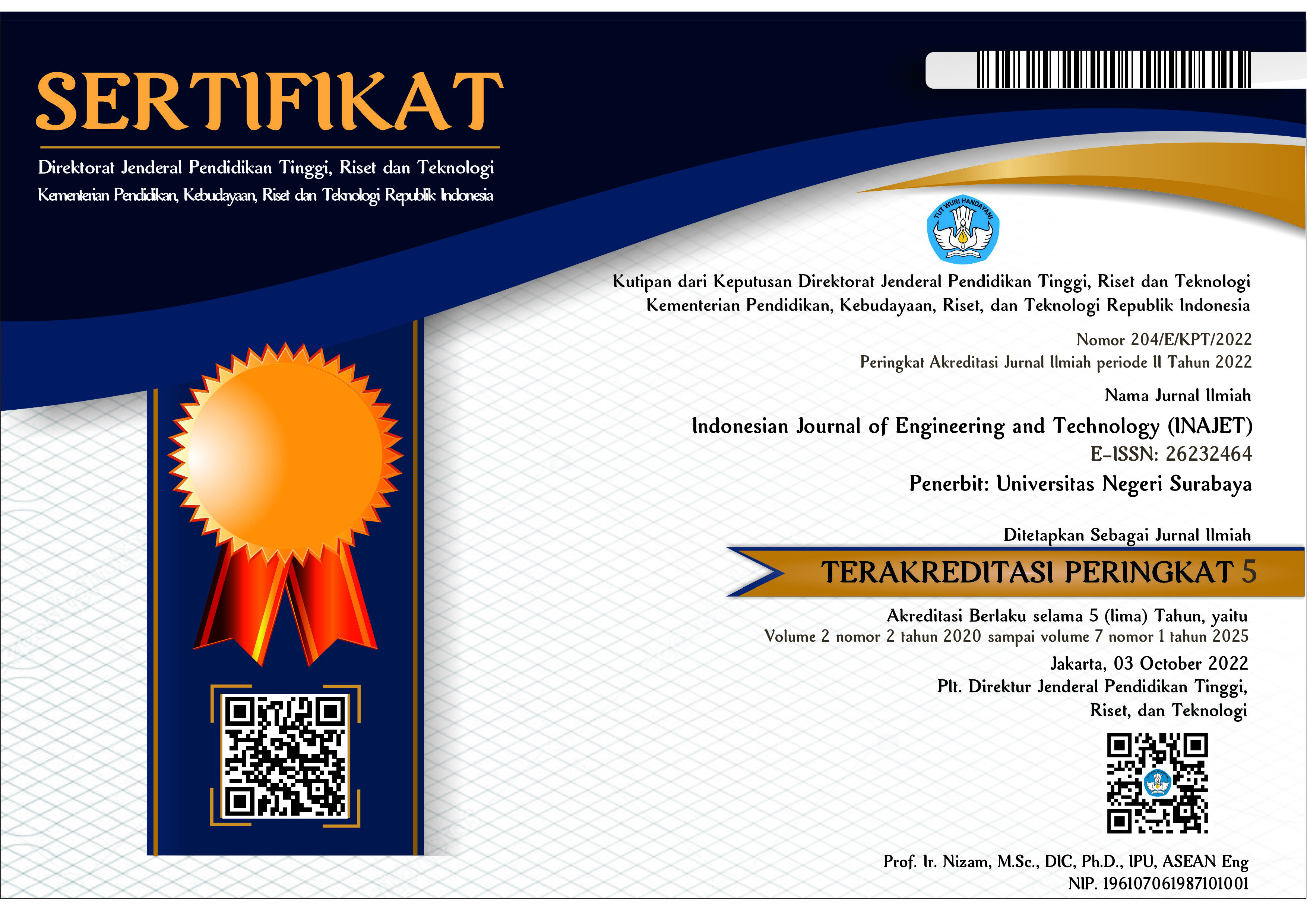Effect of Post-Welding Heat Treatment on ASTM A36 Steel on Tensile Strength
DOI:
https://doi.org/10.26740/inajet.v7n2.p36-41Abstract
Riding comfort is greatly influenced by the strength and stability of the motorcycle, one of which is the Engine Arm component that connects the frame and the engine.One important factor is the swingarm, which is designed to withstand loads and torsional stiffness.This study aims to examine the effect of air, sand, and furnace cooling media on the SMAW welding of ASTM A36 steel on tensile strength and microstructure after Post Weld Heat Treatment at a temperature of 780°C with a holding time of 60 minutes.The research uses experimental methods with tensile testing to measure tensile strength and strain, as well as microstructural analysis to observe phase changes in the weld metal and Heat Affected Zone (HAZ).The tensile test results show that the air cooling medium produced the highest tensile strength (268.8 MPa) and an average elongation of 8.95%, while the sand medium produced the lowest tensile strength (265.77 MPa) with an elongation of 8.25%.Microstructural analysis revealed that in specimens with sand cooling media, the ferrite phase is dominant, providing toughness, whereas in air cooling media, there is a ferrite phase but with a slight presence of martensite phase structure, resulting in a structure that is soft yet somewhat hard.The research results show that faster cooling media increase tensile strength and alter the microstructure of ASTM A36 steel.
Downloads
Published
How to Cite
Issue
Section
 Abstract views: 234
,
Abstract views: 234
, PDF Downloads: 232
PDF Downloads: 232











